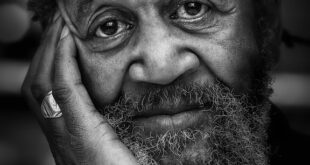Top 20 Facts About Living with PTSD
1. An Invisible Battle
Living with post-traumatic stress disorder (PTSD) can sometimes feel like an invisible battle. From the outside,
everything may seem fine, but internally, those experiencing it face daily struggles.
2. Not Just for Veterans
Contrary to popular belief, PTSD is not solely experienced by veterans. It can affect people from all walks of
life, including survivors of accidents, abuse, or natural disasters.
3. Triggers Galore
Individuals with PTSD may have triggers that can set off their symptoms. These triggers can vary from person to
person, often related to the traumatic events they experienced.
4. Daily Management
Living with PTSD requires daily management. From therapy and medication to self-care routines, finding coping mechanisms
is key to living a fulfilling life.
5. A Supportive Network
Having a strong support system is crucial for those living with PTSD. Understanding friends and family who can provide
encouragement and a listening ear make a significant difference.
6. Relaxation Techniques
Using relaxation techniques, such as deep breathing exercises or guided imagery, can help alleviate anxiety and reduce
the impact of triggering situations.
7. Flashbacks, Nightmares, and Disrupted Sleep
Flashbacks, nightmares, and disrupted sleep are common experiences for individuals living with PTSD. Establishing
calming bedtime routines can aid in improving sleep quality.
8. A Rollercoaster of Emotions
Living with PTSD means navigating a rollercoaster of emotions. It often involves a whirlwind combination of anxiety,
fear, anger, guilt, and sadness.
9. Survivor’s Guilt
Survivor’s guilt is a complex feeling that can accompany PTSD. Some individuals may struggle with reconciling their
own survival with the suffering of others in the traumatic event.
10. Reclaiming Independence
PTSD can sometimes make individuals feel trapped or dependent. Actively working towards rebuilding independence,
whether through therapy or participating in empowering activities, is vital for progress.
11. Raised Hypervigilance
Living with PTSD often leads to heightened hypervigilance. This state of constant alertness, while exhausting,
is a survival mechanism that helps individuals remain prepared and stay safe.
12. Art and Expression
Art therapy and expressive outlets can play a crucial role in the healing process for those with PTSD. Creative activities
provide a safe space for emotional release and self-discovery.
13. Relationship Challenges
PTSD can strain relationships as it affects both the individual and those close to them. It is essential to foster
open communication and seek couples or family therapy to overcome these challenges together.
14. Navigating Crowds
An overwhelming and crowded environment can trigger anxiety and panic for those with PTSD. Finding strategies, such
as attending social events with a trusted companion, can help make these situations more manageable.
15. It’s Not a Sign of Weakness
It is essential to eradicate the misconception that living with PTSD is a sign of weakness. Those managing this condition
demonstrate incredible strength and resilience every day.
16. Workplace Accommodations
Special workplace accommodations are sometimes necessary for individuals with PTSD. Whether it’s flexible hours or
creating a quiet space, supportive employers can make a profound difference.
17. Healing Takes Time
Healing from PTSD is a journey that cannot be rushed. Everyone’s pace is different, and it is crucial to provide
oneself with patience and self-compassion.
18. Finding Purpose in Advocacy
Many individuals living with PTSD find a sense of purpose in advocating for mental health, raising awareness, and
supporting others undergoing similar experiences.
19. Pets as Support Companions
Pets can offer tremendous support to individuals with PTSD. Their unconditional love, companionship, and ability
to provide a sense of security can significantly enhance the healing process.
20. Hope and Resiliency
Above all, living with PTSD reminds us of the power of hope and human resilience. Individuals with PTSD have the capacity
to reclaim their lives fully and rewrite their stories.
 Mind Uncharted Explore. Discover. Learn.
Mind Uncharted Explore. Discover. Learn.


